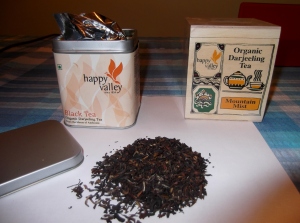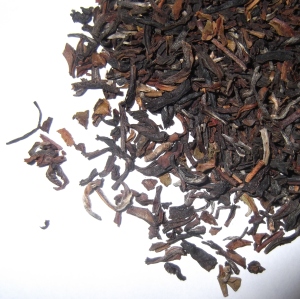Welcome to readers from Bangladesh.
Darjeeling Days
Fortune Cookie
一個快樂的心確實不錯,像一劑良藥。
Darjeeling and its teas
Darjeeling is famous for several things. It's World Heritage railway line, the views of Kanchenjunga mountain (even though it appears once every two weeks) , the British colonial old town and most importantly, its teas. Before a few words about the famous teas something about the town.
Darjeeling has its own television station. Mostly it covers Ghorkha political rallies and speeches. There was much unrest here in the 1990s. Many properties were burnt or smashed as the ethnic Ghurkas fought for independence. It was not, is not, forthcoming. Businesses now write 'Ghorkhaland' on their shopfronts to avoid similar attacks.
On a personal note I got a fire too going when I was there. It was just so cold in March a quarter of the way up the Himalayas. I didn't ever think I would sit over a coal fire in India.

Darjeeling sits at over 2100 metres and even in mid-March it was very cold. Deeply so. Numbing like the Alps but this was spring. It was an incredible shock after the heat of the plains and of course I caught a hideous cold. Time for warming cups of tea then.
Tea
Traditionally, Darjeeling teas are classified as a type of black tea. However, the modern Darjeeling style employs a hard wither (35-40% remaining leaf weight after withering), which in turn causes an incomplete oxidation for many of the best teas of this designation, which technically makes them a form of oolong. They certainly present as an Oolong in their light, golden colour. Many Darjeeling teas also appear to be a blend of teas oxidised from the green leaf to oolong, and black teas.
- First flush tea is harvested in mid-March following the spring rains, and has a gentle, very light colour, aroma, and mild astringency.
- In between tea is harvested between the two "flush" periods.
- Second flush is harvested in June and produces an amber, full bodied, muscatel-flavored cup.
- Monsoon or rains tea is harvested in the monsoon (or rainy season) between second flush and autumnal, is less withered, consequently more oxidized, and usually sold at lower prices. It is rarely exported, and often used in masala chai.
- Autumnal flush is harvested in the autumn after the rainy season, and has somewhat less delicate flavour and less spicy tones, but fuller body and darker colour.

Happy Valley Darjeeling tea: organic (100g) retails at £30/$45 at Harrods in London.
Its a very nice tea no question. As I write this I taste a hint of peach in the tea. It is so smooth that milk and sugar would destroy its subtlety. Its aroma is faint, fruity and smooth. It carries it's own sweetness sans milk or sugar and wakes me up again to the drink. I don't drink this golden, brown tea very often but it is instructive wonderful when I do.
In Darjeeling town you can drink many different variations on a theme at Nathmull Tea shop on Laden La Road.
http://www.nathmulltea.com/
Established in 1854. Happy Valley is the oldest tea plantation in Darjeeling. Being perhaps 100 metres lower than the town this tea garden sits at an elevation of around 2000 metres. This is a high mountain tea. There are tea terraces even higher on ridges around the town. Happy Valley's proximity to Chowrasta and the key municipal buildings of the town has probably helped it thrive.
By mid-March they still hadn't started picking and rightly so. There was very little growth on the bushes. The tea bushes were just over knee high and carefully trimmed. Inside, the factory appeared low-tech and the product on offer incredibly cheap at $4.50 for 100g of premium tea destined for London's west-end department stores.
This tea is grown in the shadow of the Himalayas and most notably Kanchenjunga mountain. After two weeks of mist and cloud she finally presented herself. Her height 8591 metres. The third highest mountain in the world. The photo below is taken from fully 50 miles away. All the ridges appear on a day like this, Singalila, Tiger Hill and other mountains Kabru and Jannu. No sign of Everest. She is deep in a range and hard to pick out.
Kanchenjunga with rhododendrons
If you like travel visit GuerillaZ's sister site Singing Bird's sister site on the link below:--
Darjeeling looks like Tibet. The atmosphere here is so very different from the plains of India. As if I am already in China. Buddism is the dominant religion. There are stupas, gompas, prayer flags everywhere. People walk with prayer beads, gently meditating. Tibetan and Chinese food dominates the menus.
Big five-peaked snow fortress
What Kanchenjunga means. Everest is only 250 metres higher. It is possible to filch a glimpse of Everest from near here. But I’m not sure I wish to rise at 3.30 am to get the jeep to the viewing point 12 miles south. Everest or not. So here she is. With a rainbow over her summit.

With my tea-drinking mother at the Darjeeling Light Railway
Happy Tea Drinking!


No comments:
Post a Comment